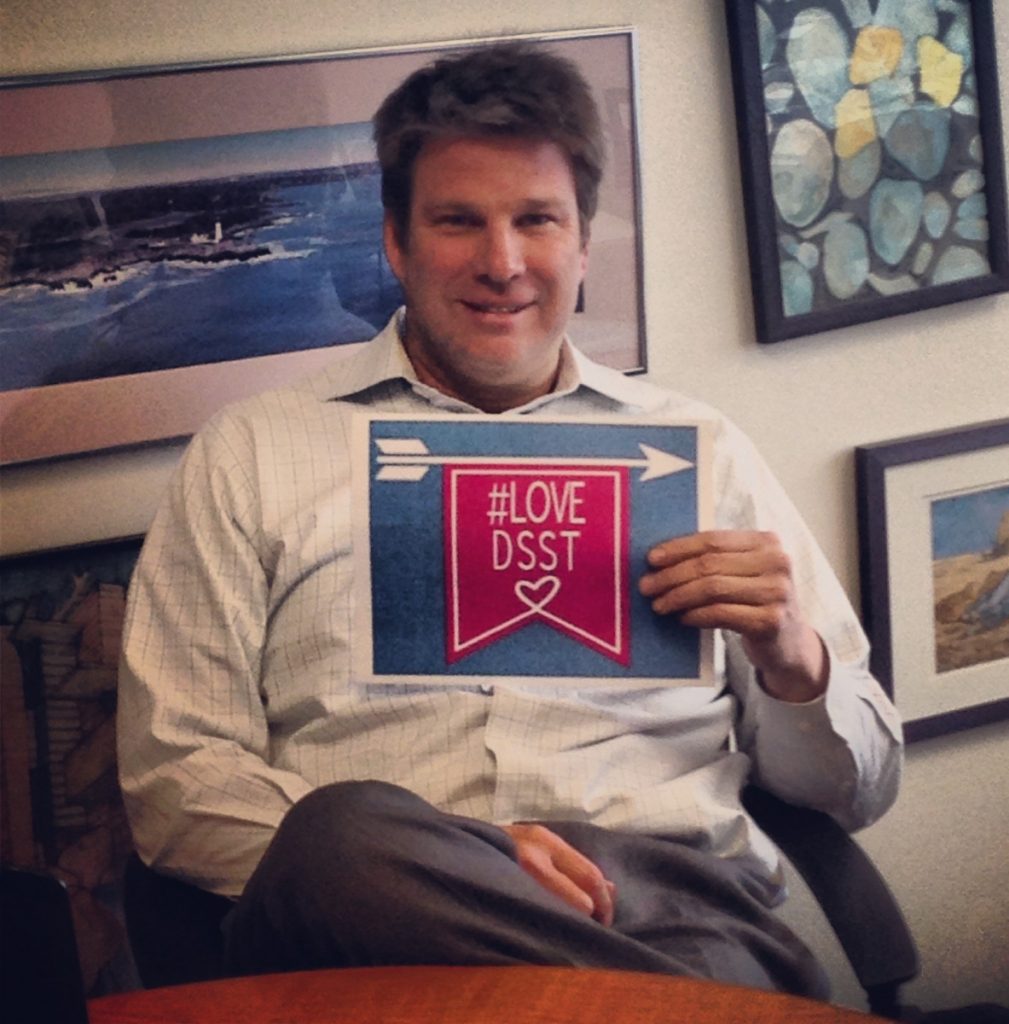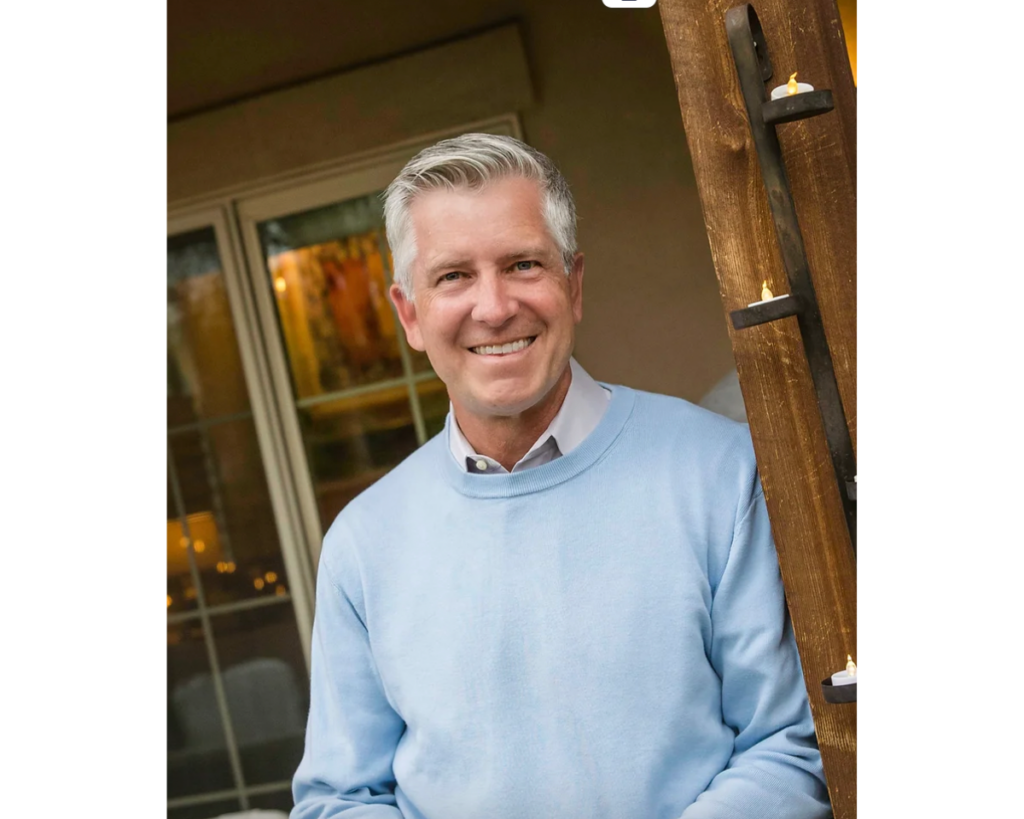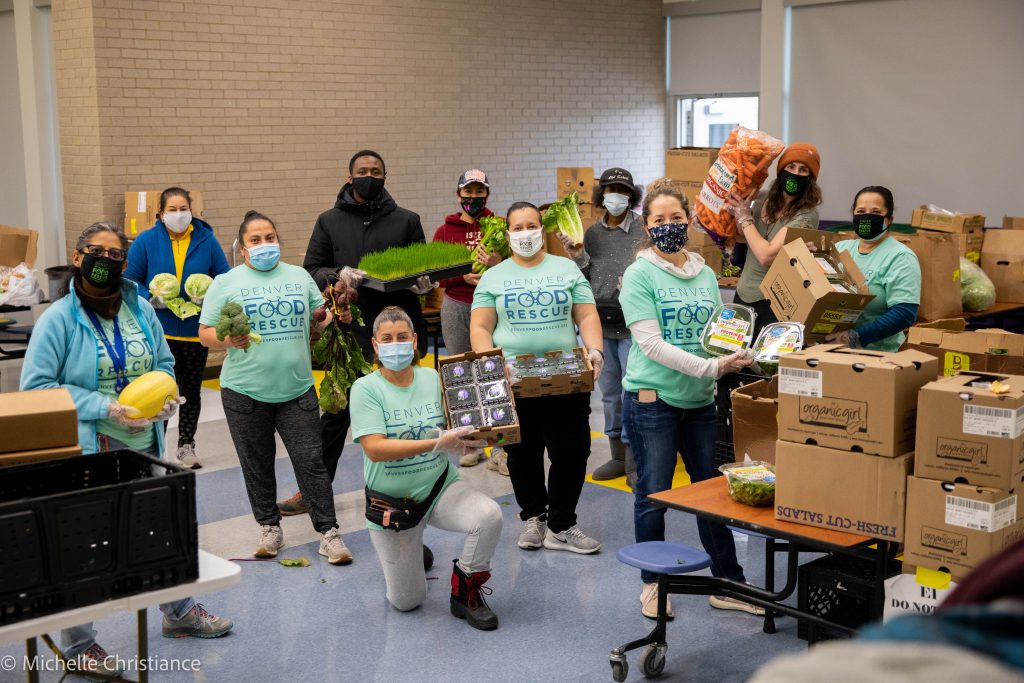Editor’s note: This piece originally ran in Boardhawk’s partner publication, Central Park EdNews as the first of a two-part interview.
Bill Kurtz, the founding CEO of DSST Public Schools, is stepping down in June after 20 years running the state’s largest and most successful network of charter schools.
Kurtz opened the first DSST high school in 2004 on Montview Boulevard at Valentia Street in what was then the initial phase of redevelopment of the former Stapleton airport site which is now Central Park. The network now boasts 16 middle and high schools that serve 7,200 students in Denver Public Schools and Aurora Public Schools (four DSSTs are in Central Park). After this year’s senior class “walks” for their diplomas in June, more than 4,200 students will have graduated since the first departing ceremony in 2008.
And as DSST grads before them, 100% of the class of 2024 has been accepted into four-year colleges. Go here for more about DSST’s impact and timeline of the network’s development.
Kurtz, 55, recently sat down with Central Park Education News to talk about his groundbreaking career overseeing an innovative model that strives to educate well an economically and racially diverse student population. Since its first school opened, DSST has far exceeded expectations and had great success educating lower-income and students of color that DPS, for the most part, fails. A fact sheet on DSST is at the end of this Q & A. Go here for more about DSST and its many accolades and awards.
CPEdNews: You graduated from Princeton and then early in your professional career you worked on Wall Street. How did you veer off into education?
BK: I started my career at Wall Street, and I loved it. It was a great challenge, and I learned a ton. In the three and a half years I was there, I was probably getting trained for 15 of those months on their dime. So, I got a business school education while I was working.
In the end, it didn’t really hit my purpose in life . . . there was something bigger than that for me. I wanted to solve a different problem and I wanted to have an impact in life that was different.
Education was always something that interested me. I volunteered in Harlem when I was at JP Chase (investment bank) and I worked with kids a lot in my summers in high school and college.
It became really clear to me that we had a public education system that just didn’t work in this country. I was always fascinated with the question of how do we have highly educated, highly resourced governments that create systems or institutions for the people they’re serving that don’t work.
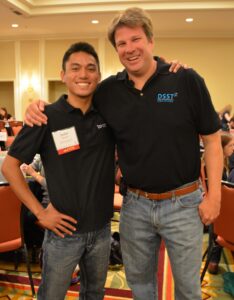
I was like, how does that happen? And so that’s probably the question that really motivated me originally. And then I figured, well, that’s a big question to answer, so maybe I should go figure out what’s happening in some of those places.
So, I worked at a Catholic grammar school in South Bronx, the poorest congressional district in the United States of America, (for three and half years) and coached and taught and helped the school run the business office and started to raise a little money.
And it was great. I loved it. I had a chance to make an impact on kids’ lives in a way that was very different than working in investment banking.
Then I went to Columbia, got my master’s in educational leadership, and then I went to be a principal in Newark, New Jersey, in a non-denominational school. We took the average Newark kid, gave them a great middle school education, and sent them to top private schools in New Jersey and across the east coast essentially.
I was there for six years. It was a great job and I loved it. And then I came out to Denver after that to start DSST.
CPEdNews: In the early 2000s, then Gov. Bill Owens was very supportive of STEM education which helped get the ball rolling. I believe High Tech High in San Diego was something of a model for DSST. Talk about how the fundamentals of DSST came to be.
BK: The whole idea was birthed out the fact that Bill Gates was just starting his foundation out of Microsoft, and his first project was small high schools, and he went around the country and talked to all 50 governors and said, “Hey, I’ll come and invest in your state if you want to open some small high schools.”
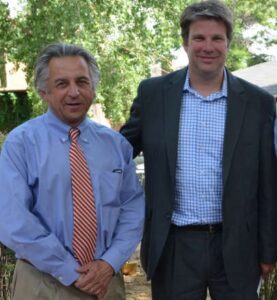
And Gov. Owens got involved and they asked David (Greenberg, lead DSST founder) to create a board (and conduct other major school development efforts). And so that’s how that started.
And so there was always this focus on being a small high school with the money that Gates had given. And then I think High Tech High was brought into the picture because they were probably one of the first of those efforts by Gates. When I was hired, they basically said, “Hey, go create a school model. We have this idea about what it could be, and Gates has shown us this.”
I said, “Great, I’ll go look at it, but just to be clear, are you empowering me to create this school, or do you want me to do X?” And they said, “No, you need to create the school.”
So, it wasn’t go copy this. I spent three or four months seeing high schools across the country and coming up with what I think was a hybrid of some of the great things High Tech High did and some of the things that we’d seen in other schools.
But the idea ultimately was that we believed that the American high school was not working for all kids and the data was pretty clear on that.
And we said, “Hey, we want to create a high school that could work for all kids, that we could reimagine what a high school could be, so that instead of some of the kids succeeding in that school, all of the kids succeed in the school.”
We wanted to create a model where kids from all backgrounds can come to school together, not in a tracked environment like an AP track or an IB track, but in one track, a single track together, and that all those kids would have the opportunity to belong to a community that was diverse, that was a community that was unlike probably any other school community they were part of because it created a community of belonging.
It elevated the community to a level that sometimes would trump individual interests. I mean, most American high schools at that time were like, “Hey, come to school and be yourself and be who you want to be, and don’t burn the school building down and don’t hurt anybody, but just put in the time and yeah, just be who you want to be and that’s what we’re going to do.”
And we just said, “No, that’s not actually the way life works” . . . and when you are part of a community, there are values and norms and expectations of a community that if a community really works, they overlay individual interests and you learn that they should align eventually.
You learn that you have to be part of something larger than yourself. That was very counter-cultural at that moment, and still is. But we said, “Hey, no, you’re a part of something and the success of your neighbor is as important as your own success. And we want a hundred percent of you get into college, and we’re only going to get there if we all agree to do that together.”
So, we didn’t have things like valedictorians and all that. It was about each person becoming their best version of themselves in a community that fostered that with everybody. And then we did have a belief that academically all kids have the gifts and the abilities to get a world-class education.
And so we said, “Hey, we want every single one of you to have the chance to go to college, period.” Which again, people thought we were absolutely crazy, right?

We said we believe that can happen. We believe all kids have the ability to go to college . . . And so that was a core part of what we wanted to be. Everybody should have the choice to make that decision.
And then thirdly, we just wanted all kids to have the opportunity to be exposed to STEM in such a way that if they choose, they could pursue a STEM field of study.
And that was revolutionary at the time. STEM wasn’t even a word at the time. We said we’re not requiring them to go into STEM. It’s where we believe this world is going, that it will be invaluable.
And some of them will be artists and some of them will be journalists, and some of them will be teachers. But the fact is they need to have that understanding, particularly if you’re coming from a low-income community, which has never had access to some of these STEM fields.
And so, I think ultimately those were some of the big pillars, and most of those pillars were considered countercultural or crazy. And I think the most important thing to us at the time was one, that we created a school that worked for all kids, and that two, we created a school where people hopefully in a diverse, integrated community, could learn to become the best versions of themselves.
I think that in our best days, we accomplished a lot of that. We made plenty of mistakes, and not everything we did worked by any means.
CPEdNews: That’s how you learn.
BK: We’re seeing it in data, but there’s lots of things that have changed. In some ways things are harder than ever to do, but I do think the foundational elements still are very much true and hold true for the outcomes we want for kids.
CPEdNews: You mentioned Gates and the small school movement. It was strong for a while, but school districts here didn’t adopt it. The cost was an issue, but also districts are often loathe to change. Was it a mistake, that the small school movement petered out?
BK: I think it was executed well in some places and not others. I think Gates, by its own admission would say, “Hey, much of what we tried to do in that first wave didn’t work.”
I think that’s true. I think that we should always have a diversity of school models, and there are comprehensive schools that are great for kids and work well for kids.
It’s not that we should only have X or Y. I think there are some great benefits and opportunities that larger schools create, so we shouldn’t ignore that. And it’s not either or.
That being said, we do have to acknowledge that systemically, large schools have never, in my estimation, delivered for low-income kids.
I think it is because dominant culture values play out and dominant white, often affluent culture, does not always value and prioritize equity and prioritize and value all kids succeeding.
CPEdNews: Those types of efforts often come as add-ons, not part of an intentional school culture.
BK: Equity has to be baked into the core of the DNA of the school and the design where the dominant systemic issues are always going to be the mean, right?
I can’t tell you how many high school principals at East or other places that have tried things, who’ve come to DSST and said, “Well, we’re going to do this with our ninth graders, and it’s going to change everything. And it’s there for two years and it’s gone.”
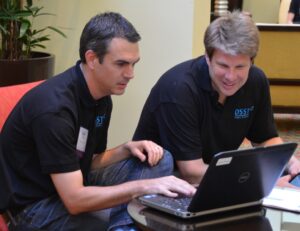
CPEdNews: It doesn’t get institutionalized.
BK: It doesn’t get institutionalized. The core of the school is not centered there. We have to be honest about that. And you and I both know that our gaps in achievement (between white and minority students) today are larger then when DSST started, and they’re some of the largest in the country.
And nobody’s talking about it. Nobody seems to think it’s an important enough problem to solve.
Do I think that there’s a one-size-fits-all model to solve Denver’s public education problems? No. Should we all be charters in Denver? No. Do we think that we should have a mix of options? Absolutely. Do we think we should have large comprehensive high schools? Yes.
But should we be clear-eyed about the results and be relentless on trying to find different ways to serve all our kids successfully? Yes. Are we doing that today? No, not at all.
CPEdNews: So, facing that system that has failed lower income and kids of color, why did you think you could do better?
BK: Because all you have to do is spend a little bit of time with those kids. And you’ll see that talent is distributed equally. The issue is not our kids. The issue is adults. We have equally talented kids in all communities in Denver, from all backgrounds, from all economic levels.
Talent is distributed equally. Access is not. Why did I believe it? Because all you’ve got to do is look in the eyes of a child and say, “You have the ability, I know you do, to accomplish great things.” We weren’t giving them the chance and the opportunity; we weren’t creating schools that could help them become their best selves.
We have to acknowledge with humility that we as adults don’t always get it right. Don’t always create the right schools, and we should have a tenacity to continue to try to figure out how to do this better.
And DSST has a long way to go to do it better. We’re nowhere near where we want to be. The most important thing for us is that we have the tenacity to learn and to grow to do it better.
CPEdNews: DSST’s core values play into this — respect, responsibility, integrity, courage, curiosity and doing your best. You were among the first school leaders in Denver to firmly say these are what we stand for, here’s what’s going to underpin what we do. How did you arrive at those values, and why do you think it’s so important that they are clearly stated and adhered to?
BK: It comes back to the pillars of who we wanted to be. We wanted to help young people become the best versions of themselves. And sometimes people would say, “Oh, DSST is all about academics, and all they want to do is get kids into college and have their SAT scores high and blah, blah, blah.”
No, no, no, no, no. That’s an important part, but let’s be honest, the most educated societies in the world in our history have committed some of the greatest atrocities. . .. We want our kids to be the best version of themselves, which includes building character and understanding who you are so that you are well educated, and you have a deep sense of self that’s grounded in a set of values that will help humanity.
That was always a part of our vision.
And back in the day, people were like, you can’t set values. Of course you can. Every single human interaction has a set of values that are implicit.
And so, either values are implicitly stated, which then they are inequitable, frankly, or you explicitly state them, and you all play by the same set of expectations that ultimately help you create a healthy community.
The six (values) that we picked aren’t that important. I mean, they’re good values (but) you could pick six different ones. It’s not which ones we picked. It’s how we live them, how we committed to them, and how we allowed the values to shape us into human beings into a community.
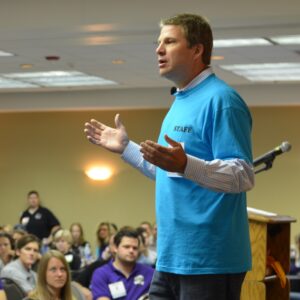
We wanted, most importantly, for our kids to understand what it meant to live a values-driven life, because we think that is one of the most important things a young person learns, so that when they leave, they can choose their own values or DSST’s values and then live those values with fidelity and integrity. And I think many of our kids will tell you that was the most formative part of their experience at DSST.
And the last thing I would say is our values, unlike most institutions, were for everybody. Most school districts have values that are directed at the kids, or they’re directed at the staff. We basically said, no, no, no. We’re going to have horizontal values. They’re going to apply to everybody. They apply to me as much as they do a student, and we are all going to struggle to live them together.
CPEdNews: Traditional public schools can be afraid of explicitly stating what their shared values are. Charters like DSST seemed to bring that to the fore instead of assuming everyone knows how to be a good person in a community.
BK: All true. That’s just a denial of reality because every school has an implicit set of values. They may be stated or unstated, but when you walk into a school, even a school that is free love in 1970s, open classroom, and we’re all going to get along. Is that an expression of values in a deep sense?
And if you don’t have the courage to name them, there’s nothing worse than walking into a community that has a set of values that are unstated that you’re trying to figure out. And yes, some people are going to disagree with them. That’s fine. It’s just that when we’re in our community, we have to get to some agreement on how to do that while we’re together as a community.
CPEdNews: You mentioned rules and DSST has had some strict ones which no doubt made sense, but they have changed. Talk about the way DSST has evolved over 20 years in how the schools operate on a day-to-day basis.
BK: There’s a lot of things that have changed. We got a lot of things right. We got a lot of things wrong. And so, we evolved. What we needed to do was the best that we could in what we knew in that moment to serve our students and families with the best education we could give them.
And I think ultimately there’s been lots of things that have changed, like society, in the last 20 years.
I mean, 2004 doesn’t feel like two decades ago, it feels like six decades ago. But yeah, I think the heart of DSST is the same, our commitment to college, our commitment to STEM, our commitment to excellence in learning for all kids, our commitment to community and belonging.
But yeah, we express them differently. I think we’re a much more equitable organization. I think we’ve been on a journey of understanding how to be inclusive, how to be equitable, how to walk that journey by saying, “Hey, we’re on a journey of excellence, but how do we do that with more inclusiveness? And how do we do that in a way that helps people belong even more?”
We’ve worked really hard at that. I think that’s an important part of who we’ve become.
DSST Facts
- 16 Middle and High Schools (14 in DPS; 2 in Aurora)
- 7,200 students
- After 2024 graduation: 4,200 graduates since 2008.
- Number of employees: 950; teachers: about 700
- Racial breakdown of teachers: 35% staff of color
- Network annual budget: $100 million
- Fundraising income: $10 million annually
- College matriculation: 100% admittance annually
- Student racial/demographic breakdown
- 61% Hispanic/Latino
- 20% Black/African American
- 11% White
- 4% Asian
- 4% Two or more races
- 1% Other
- 77% Free and Reduced Lunch (FRL; a measure of low income)
- 53% Male
- 47% Female
- <1% Transgender or Non-Binary

